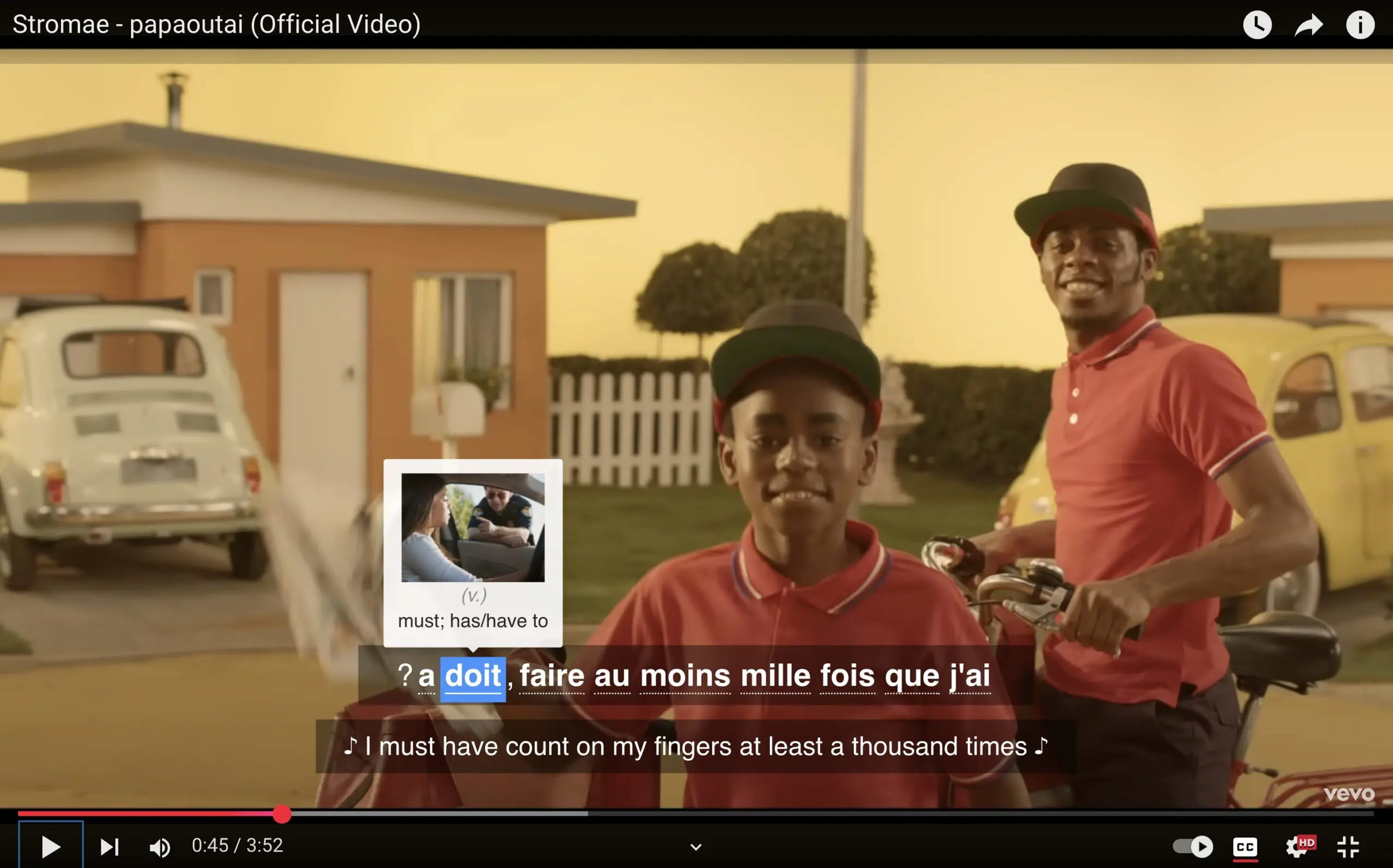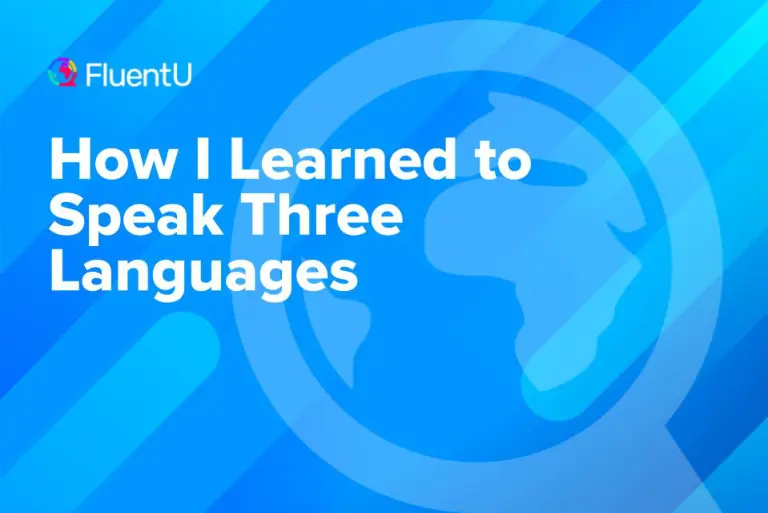The Complete Guide to Input Language Learning

Khatzumoto of All Japanese All the Time achieved incredible Japanese speaking and writing skills through television and comics. Kató Lomb, a Hungarian polyglot, learned many of her sixteen languages through reading trashy novels.
This is called input language learning. “Input” is everything you listen to, watch or read in your target language. Here’s how you can use it to learn yours.
Download: This blog post is available as a convenient and portable PDF that you can take anywhere. Click here to get a copy. (Download)
What Is Input Language Learning?
Input learning can easily be expressed through the “Iceberg Theory.”
Hemingway’s Iceberg Theory was created and tailored for writers of fiction, but it can also affect how we view a number of things, including the acquisition of skills like language learning.
Your passive skills—your comprehension abilities—might be “underwater,” invisible to everyone except you. But they’ll one day give you the balance and confidence to express yourself in your target language. When you keep feeding your iceberg more and more input, the part above the surface will grow too, and you’ll start seeing more results with your active skills.
The Iceberg Theory is helpful if you find yourself losing confidence in your active skills, even when your passive skills might be well-developed.
How to Use Input Language Learning Effectively
1. Seek out engaging resources for listening and reading.
I can personally tell you that input language learning can seem like it’s not having much of an effect. But every understood word is a breakthrough. Patience is key, which is why you need to keep your resources fun and engaging. It’s got to be stuff that you come back to, time and time again.
Luckily, there are a million ways to do that. Using authentic materials—like TV and movies—for your input keeps learning engaging.
Just search YouTube for songs in your target language. Ones in genres that you’ll want to play again and again. Google online forums—in your target language—that discuss podcasts, radio stations and TV show recommendations. Amazon third-party sellers are great for finding books in even the most uncommon languages.
2. Use spaced repetition software
Input language learning mostly consists of consuming content. But it can also involve methods like entering sentences and vocabulary items into flashcard programs to reap maximum retention benefits—if you want it to.
For example, Khatzumoto “mined” Japanese sentences from his favorite comic books and websites and entered them into his spaced repetition flashcard program. He copied the sentences that he found particularly exciting or funny and put them onto the “front” of the card, with an English translation on the back.
Because of the algorithm used in SRS programs, he reviewed the cards that were most difficult to remember more often than the easy ones. After 10,000 SRS sentences combined with 10,000 hours of listening to Japanese, Khatzumoto was fluent in Japanese before ever setting foot in Japan.
3. Practice extensive reading
Kató Lomb learned her languages through novels—the trashier the better. As she explains in her book, she read through novels trying to parse the vocabulary and grammar as much as she could without a dictionary.
This is called extensive reading—reading without attempting to look up every single unknown word. She enjoyed the language for itself, with or without understanding, and only looked up words that appeared time and time again.
With all of the input she received through her novels, she gradually built up sizable knowledge and an intuitive sense of grammar. What’s even more encouraging is that Lomb learned most of her languages in the ’40s, ’50s and ’60s, well before the conveniences of online radio, television or international bookstores.
I personally use extensive reading and immersive listening in my own studies. I find extensive reading gives me a broad sense of how the language works. I read things like “Harry Potter” (which I know very well in English) in my target languages, and I “decode” a lot of the language by using context.
In the same way, listening to foreign language radio daily familiarizes me with the sounds of the language so that I can start picking out words more quickly once my vocabulary gets going.
Another way you can get a lot of input in your target language is through an immersive language learning program like FluentU.
FluentU takes authentic videos—like music videos, movie trailers, news and inspiring talks—and turns them into personalized language learning lessons.
You can try FluentU for free for 2 weeks. Check out the website or download the iOS app or Android app.
P.S. Click here to take advantage of our current sale! (Expires at the end of this month.)
4. Stay consistent and don’t get demotivated.
Whenever you feel your confidence slipping over your stuttering speech (it happens!) or long pauses as you search for words, remember how only an eighth of an iceberg is above water. You might not have much at the tip of your tongue when people around you ask you to perform. Believe me, this is how I feel about my current target language, Dutch.
Some will argue that speaking is most important—that you can’t say you know a language if your speaking skills are rusty. This simply isn’t true. Improving your comprehension improves all skills.
Even in our native languages, we can only produce a fraction of what we can understand. The rest is underwater, just like with our target languages. My native language is English—I sure can read a Dickens novel, but that doesn’t mean my attempts at writing one come close. I can follow along with the dialogue in “Pulp Fiction,” but that doesn’t mean I can talk like a Tarantino character off the cuff whenever I please.
When learners favor input, passive skills will predictably outdo active skills. Just remember that the bulk of your work is underwater. That’s where your vocabulary is. It’s where your grammar is. Rest assured, your input-based language learning is working.
5. Don’t rush speaking in your target language.
Speaking straight out of the gate is not for everyone, although it’s heavily encouraged by the online language learning community.
I, like many, get super nervous when speaking, particularly when I try to talk too early when my language iceberg hasn’t yet grown to a size where I feel comfortable. I might have a store of linguistic knowledge underwater, but the tiny tip of the iceberg just isn’t enough to make me confident in output.
It’s not worth freezing up and having negative experiences that could jeopardize my whole project, so I wait. Improving my passive skills is wonderfully rewarding—language isn’t all about talking. Reading and understanding are hugely important skills, so don’t feel guilty if you prefer to overindulge in them.
Eventually, you’ll be at the point where speaking will seem like the next natural step by virtue of that passive knowledge you’ve accumulated.
6. Have faith that you’ll see results.
Yes, input language learning requires some patience. If you’re more comfortable with movies and books than chatting while you’re out and about, then there’s a bit of a trade-off.
At the same level, an input-loving learner’s comprehension skills will outmatch someone who focuses on conversation right away. But that same input-lover’s conversational abilities will lag behind.
Still, provided both keep at their languages for long periods of time, they’ll both get to well-rounded fluency in the end.
So have faith that increases in your comprehension matter, and that they are crucial for improved active skills.
Your iceberg will always be growing, provided you are interacting with your language. But only one-eighth will be visible. Nevertheless, as time goes on—and as your underwater bank of knowledge increases—that one-eighth will grow as well.
Keep at it, and that underwater bank will be “pushed” above the surface, and you’ll find yourself speaking and writing more confidently than ever.
As you can see, input language learning is highly favored by many and not so much by others. It all comes down to how you like to learn languages.
Follow these tips, stay consistent and don’t get discouraged. Remember that your knowledge is underwater—not nonexistent. And eventually, you’ll be able to speak and write confidently, too.
Download: This blog post is available as a convenient and portable PDF that you can take anywhere. Click here to get a copy. (Download)
And One More Thing...
If you want to learn a new language with real-world videos, let me tell you about my favorite language-learning tool–FluentU.
With FluentU, you can turn any subtitled YouTube or Netflix video into an interactive language lesson. That means you’re not just studying a language—you’re experiencing it exactly as native speakers use it.
No boring drills. No dry textbooks. Just the kind of content you’d actually watch anyway, but with tools to help you learn. My favorite feature lets you import YouTube videos directly into your FluentU account.
And that’s just the beginning! You can also check out our extensive video library packed with music videos, movie trailers, news clips and more!
Everything is organized by difficulty level, media type, and topic, so you can easily find videos that match your interests and skill level.
Personally, I love watching clips from movies and shows where there’s plenty of slang and expressions that will help you understand native speakers–and sound more like them!
As you watch, you’ll follow along with interactive, dual-language subtitles. Come across a new word or phrase? Just hover over it for an instant translation or click to hear its pronunciation, see example sentences, and more.
Once you’re done watching, FluentU reinforces what you’ve learned by showing you more examples of key words and phrases from the video—then quizzes you to check your understanding. You’ll even get extra practice with tricky words and reminders when it’s time to review.
We know what it takes to make real progress in a new language, and we’ve built FluentU to help you get there. You can use FluentU on your computer, tablet, or download our app from the App Store or Google Play.
Ready to start learning? Click here to take advantage of our current sale (it expires at the end of this month). And your first 2 weeks are free!












